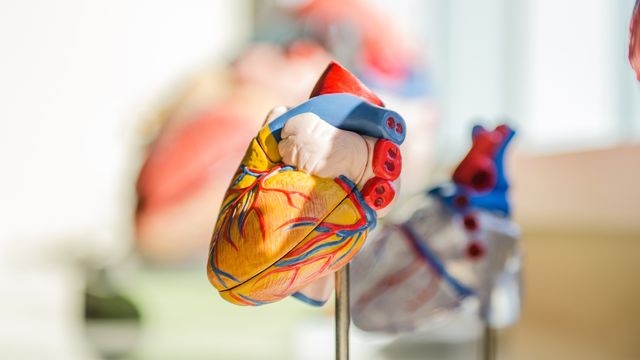Congenital disorders
New Genes Implicated in Life-Threatening Heart Disease
Speechify
Thank you. Listen to this article using the player above.
Want to listen to this article for FREE?
Complete the form below to unlock access to ALL audio articles.
Summary
Researchers from Sanford Burnham Prebys identified new genes linked to hypoplastic left heart syndrome (HLHS) by studying patient genetics and fruit fly experiments. Understanding these genes could offer insights into the disease’s biology and potential avenues for prevention and treatment.
Key takeaways
- Researchers at Sanford Burnham Prebys identified new genes contributing to hypoplastic left heart syndrome (HLHS) using patient genetics and fruit fly experiments.
- HLHS is a life-threatening heart disease in infants where the left ventricle is underdeveloped and unable to pump oxygenated blood.
- Genetics plays a major role in HLHS, and the study’s findings could aid in understanding the disease’s biology and potentially lead to prevention and better treatments.
New genes that contribute to hypoplastic left heart syndrome
By identifying genes in patients and testing their effects in fruit flies, researchers from Sanford Burnham Prebys have found new genes that contribute to hypoplastic left heart syndrome (HLHS), a rare, life-threatening heart disease that occurs in infants.
The findings, published in the journal eLife, bring scientists one step closer to unraveling the biology of this complex disease.
“Every case of HLHS is unique because there are many different things that can go wrong during the early development of the heart,” says senior author Rolf Bodmer, Ph.D., director of the Center for Genetic Disorders and Aging Research at Sanford Burnham Prebys. “If we’re able to uncover what drives this disease biologically, it may be possible to one day prevent the disease or reduce complications for people living with it.”
Want more breaking news?
Subscribe to Technology Networks’ daily newsletter, delivering breaking science news straight to your inbox every day.
Subscribe for FREE
In babies with HLHS, the left side of the heart (left ventricle) is underdeveloped and unable to pump oxygenated blood to the rest of the body. The Centers for Disease Control and Prevention estimate that each year about 1,025 babies in the United States are born with HLHS, and it accounts for about 2–4% of all congenital heart defects. Though rare, HLHS is extremely dangerous—it is nearly always fatal without multiple open-heart surgeries.
Genetics is thought to be a major driver of HLHS, but the specific genes involved have remained a mystery. To look for genes that contribute to HLHS, the researchers sequenced the genomes of 183 people with HLHS and their parents, including a family in which the parents were genetically related to each other. Focusing on this family helped the researchers narrow their search to a few key genes.
“We inherit two different variants of each gene, one from each parent,” says Georg Vogler, Ph.D., a research assistant professor at Sanford Burnham Prebys and co-senior author of the study. “If both parents pass down a gene variant that can cause problems, then the effect of that gene variant is accentuated in the child. Because of this effect, this family gave us a unique opportunity to look for new genes that drive HLHS that may not be as apparent in other families.”
To test whether the genes they identified could be contributing to HLHS, the researchers performed genetic experiments on fruit fly hearts that are built with genes similar to those found in human hearts. They found that blocking the activity of these genes in flies interfered with their heart’s ability to contract, leading to significant heart defects.
“While more research will be needed to explore precisely how these genes result in heart defects, one hypothesis is that because certain gene variants make it harder for the heart to contract, blood can’t flow as easily to the left side of the heart, thus compromising its proper formation,” says Bodmer. “This could lead to the types of abnormalities seen in HLHS.”
While the researchers identified genes that can contribute to HLHS, they caution that it is unlikely we will find a single gene implicated in the disease in all cases.
“HLHS is driven by many genetic and environmental factors, but the more we can shed light on these factors, the better chance we have of finding new ways to prevent and treat the disease,” says Bodmer. “For example, it may be possible that increasing the activity of one of these genes could be enough to strengthen the heart and reduce the risk of heart complications in survivors.”
Reference: Birker K, Ge S, Kirkland NJ, et al. Mitochondrial MICOS complex genes, implicated in hypoplastic left heart syndrome, maintain cardiac contractility and actomyosin integrity. eLife. 2023;12:e83385. doi: 10.7554/eLife.83385
This article has been republished from the following materials. Article summaries may be generated using fact-checked AI models. Note: material may have been edited for length and content. For further information, please contact the cited source.


